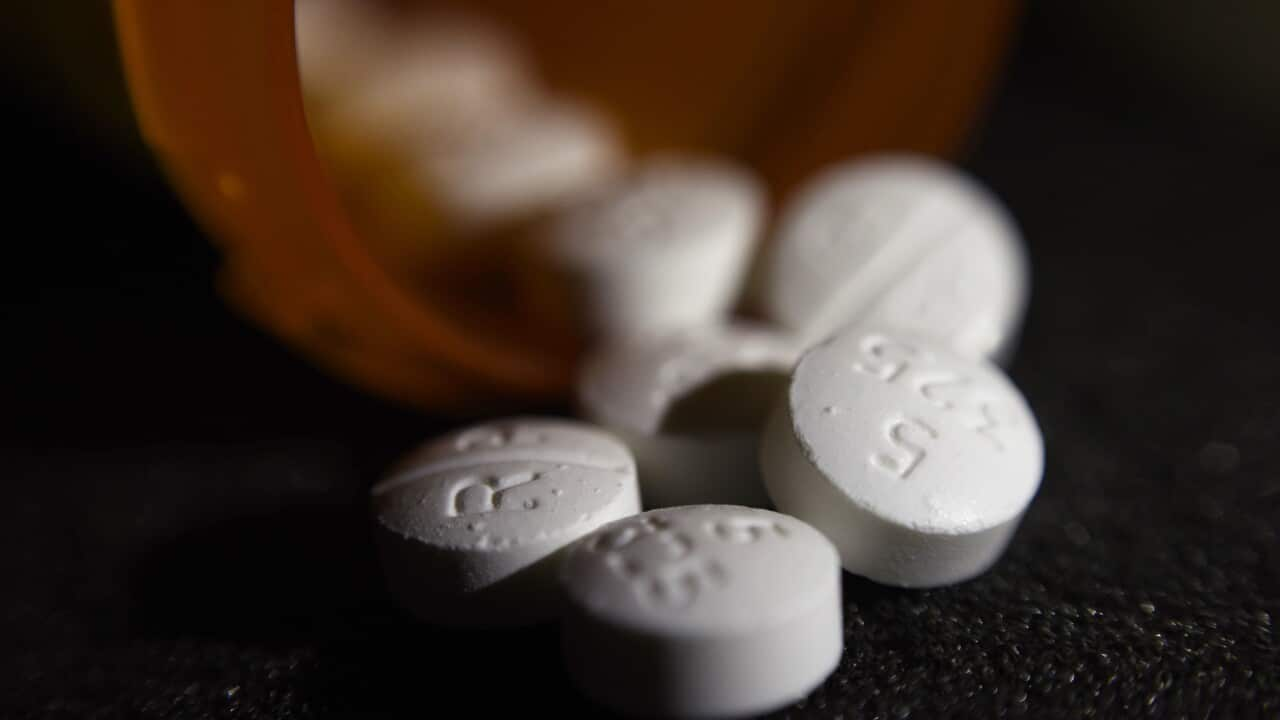Key Points
- Pharmaceutical opioids now account for more drug-related deaths in Australia than any other drug category.
- The United States is facing a fentanyl epidemic, with the Drug Enforcement Agency seizing 386 million doses in 2023.
- Experts have warned the full impact is yet to be seen in Australia.
Sister Mary-Lynne Cochrane has lived with debilitating arthritis and nerve pain since her early 20s.
After being prescribed opioids to help her cope, she ended up taking them every day for nearly 30 years.
"For me, the first time using opioids was an absolute relief because of removing the pain that I was experiencing at the time," Cochrane, who is a nun with the Sisters of the Good Samaritan, said.
Opioids are frequently prescribed in Australia to relieve pain.
"Typically, opioids are used for pain relief following acute trauma, so if you break a leg or potentially have a serious operation," Mark Connor, a professor of pharmacology at Macquarie University, said.
"They can also be used to treat some kinds of chronic pain, particularly pain associated with cancer."
Some of the most commonly used types include codeine, fentanyl, oxycodone, and methadone.
They are usually found in tablet form, but some treatments come as liquids. Heroin, another opioid, is typically injected.

There are several types of opioids. Source: AAP / David Goldman/AP
But he said they can become "dangerous" if you take them for an extended period of time.
"They can stop working after a while, and so you may need to take more opioids — and that can become a problem."
That's what happened to Cochrane.
"As my time went on, I realised that to get any relief constantly I needed to take more opioids," she said.
"The side effects for me became a bit problematic. There was a stage where I couldn't drive. I was becoming just lethargic and sort of not wanting to do anything. It was like being in the cloud."
It left her in a challenging position.
"My difficulty was then that I wanted to live a sort of clear quality of life - and how was I going to do that, because I couldn't do it with the amount of opioids that I was taking at that time," she said.
When she started taking a higher dosage that actually made her pain worse, she realised she could no longer afford to be dependant on them.
Could Australia be facing an opioid crisis?
Department of Health data suggests that on a snapshot day in 2022, almost 56,000 people were receiving treatment for their opioid dependence - an increase of 20 per cent on 2011 figures.
Pharmaceutical opioids now account for more drug-related deaths in Australia than any other drug category.
And although they're only available in specific cases through a doctor, their addictive nature fuels an illegal market.

Pharmaceutical opioids now account for more drug-related deaths in Australia than any other drug category. Source: Getty / NurPhoto
"A lot of people become hooked on fentanyl because they're unaware of fentanyl contamination in other drugs they're taking, this is the evidence from overseas," he said.
"Some fentanyl goes into cocaine. Sometimes it appears in meth, but the primary group of people who end up with a fentanyl addiction are heroin users."
Lauchs said that because fentanyl is much cheaper, a lot of people who supply heroin are using fentanyl to produce the same outcome as heroin at a much lower price, but they're still selling it as heroin.
LISTEN TO

New approaches to treating chronic pain
SBS News
06:34
The US is already facing a fentanyl epidemic, with the Drug Enforcement Agency seizing a record 386 million doses in 2023 — which it says is enough to kill every American.
Lauchs said he believed the reason fentanyl was yet to have a large impact in Australia was due to high demand in the US.
"The fentanyl is produced in Latin America, mainly Mexico, sometimes Colombia," he said.
"It's coming to Australia, from the information we have right now, through the same sources that are providing cocaine from that same region.
"The danger, unlike cocaine, is the death rate. There's all these stories in America where the opioid overdose rate is so high they are losing more people than died in the entire Vietnam War from the American army."
The Australian Federal Police says it's aware of the risk fentanyl poses to communities. However, there have only been a small number of detections to date.
Health professionals highlight that over 45 per cent of unintentional drug-induced deaths in 2021 were associated with opioids so there's work to be done to draw attention to the dangers.
Readers seeking crisis support can contact Lifeline on 13 11 14.



